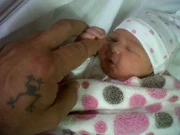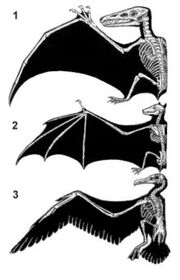
The human hand, often touted as one of the defining characteristics of our humanity due to its role in the evolution of tool use, may have actually been a by product of the selection on hominid toes for bipedal locomotion (Rolian,Lieberman,& Hallgrímsson, 2010).

Evolutionary Development Chicken Teeth - Crash Course Biology 17
Check out this video on homologous development
I had never heard of this term, until reading about the evolution of human fingers and toes during Discussion 5 (Rolian, Lieberman, & Hallgrímsson, 2010). It has intrigued me however and I must investigate...
Homology
Examples of homologous structures amongst differing taxonomic groups is easily illustrated through the comparison of different wing structures. Only three classes of vertebrates have accomplished true flight: birds, bats and pteridactyls. These limbs have the same use for each of these types of animals, but were derived differently for each. The number of limbs and digits involved vary as does the structural building blocks of the airfoil itself.
Homology can also refer similarities amongst features in animals and plants sharing a common ancestry. The embrionic development amongst vertebrates, for example, is very similar up to a point at which genetic variances begin to differentiate the structures into those we recognize for individual groups or species of animals. In the video above, Hank Green explains how the study of Evolutionary Development (or as he calls it, Evo Devo) is helping us understand evolution on the genetic level.

figure downloaded from http://en.wikipedia.org/wiki/Homology_(biology).
Serial Homology
This term carries the idea of homology to another level. It refers to the idea that certain biological features, such as digits on the front and hind limbs of animals, are constrained to a greater or lesser degree to a similar development and therefore to a similar morphology. This, as I understand it, is due to a linkage between the genes controlling the embrionic development of each. Therefore, the selectional pressures on one set of features, may drive the morphological evolution of another serially homologous feature.
Another example...